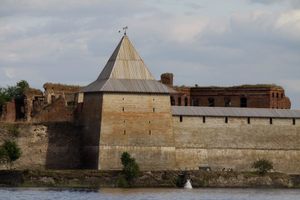About
Turn the corner along a certain stretch of the Volkov River in central Novgorod and one can't help but run into a structure often likened to an abandoned spaceship. Closer investigation of the building reveals that you've just come face-to-face with what many consider a modernist architectural triumph, in which the dramatic arts have thrived for the past three decades.
Thanks to an impresario by the name of Nikolay Ivanov, the Novgorod Academic Drama Theater, named after Russia's literary treasure Fyodor Dostoevsky, has existed in the city of Novgorod ever since the year 1853. Starting in a well-appointed drawing room, it would take until 1987, however, for the final product to look like something from another world crash-landed in western Russia. It was a matter of timing that caused the story of Novgorod's Theater of Dramatic Arts to be forgotten for decades, lost as it was in the tumult of Russia's capitalist rebirth.
Designed by Vladimir Somov, one of the Soviet Union's eccentric, rising architectural superstars, the Theater was created in an effort to bring the dramatic arts to the proletariat. Communist specs dictated that any community numbering more than 200,000 heads earned itself an artistic center. Somov drafted three plans for the theater, and submitted the most conservative of the set for approval to his higher-ups. The officials balked, and, for unknown reasons, selected an even less conservative of the trio for final development. What resulted is the present-day Theater of Dramatic Arts building.
Constructed over a period of several years, the completion of the theater coincided with the period of perestroika within the Soviet Union, effectively obfuscating the facts of the strange building's creation, particularly Somov's inspired design process. With Escher-esque hallways and rooms within rooms, the theatre is a marvel that few outsiders know about, even as it continues to function as an arts hall to this day. The engaging investigative work done by photographer Andrei Rozen delves into the ways the warm, albeit crumbling, the interior of the theater has been maintained through the love of its administrators and operators, who have gone so far as to hand-refinish the lobby's parquet floor to keep up with the inevitable wear and tear brought on by Russia's punishing winters.
Visitors to the Novgorod area are welcome to take a break from the city's many classic Christian churches in favor of wandering the grounds of this overlooked brutalist, modernist masterpiece. In order to gain access to the interior realms of Dostoevsky's eponymous theater, picking up a ticket to a show during production season is advised, as the building may seem to be crumbling in spots, but its heart is alive, well, and anything but abandoned.
Related Tags
Published
April 14, 2016



















